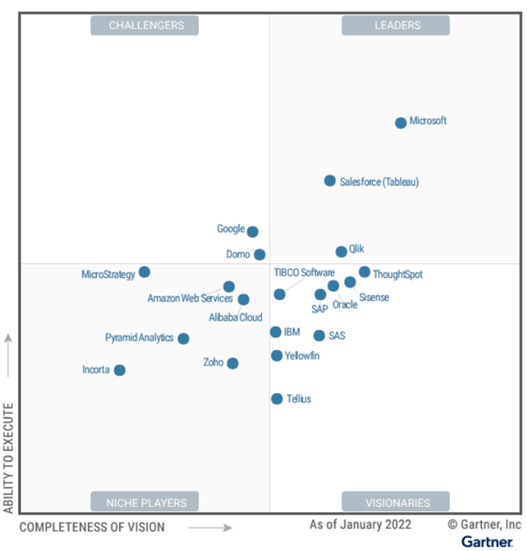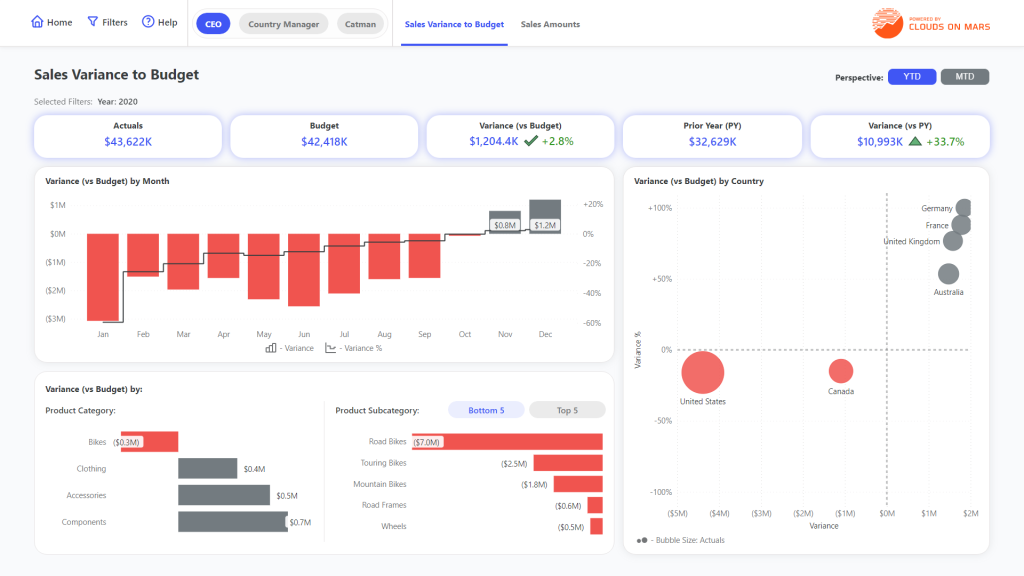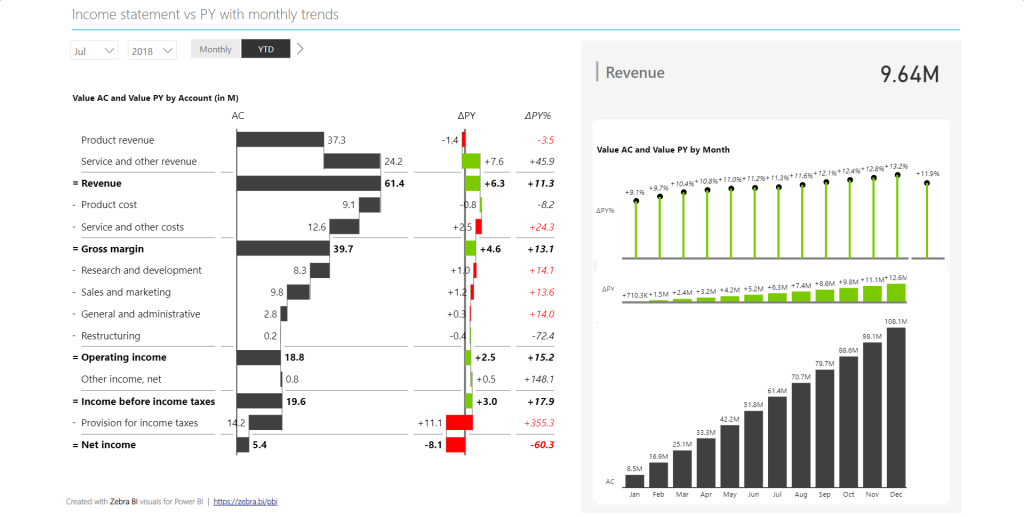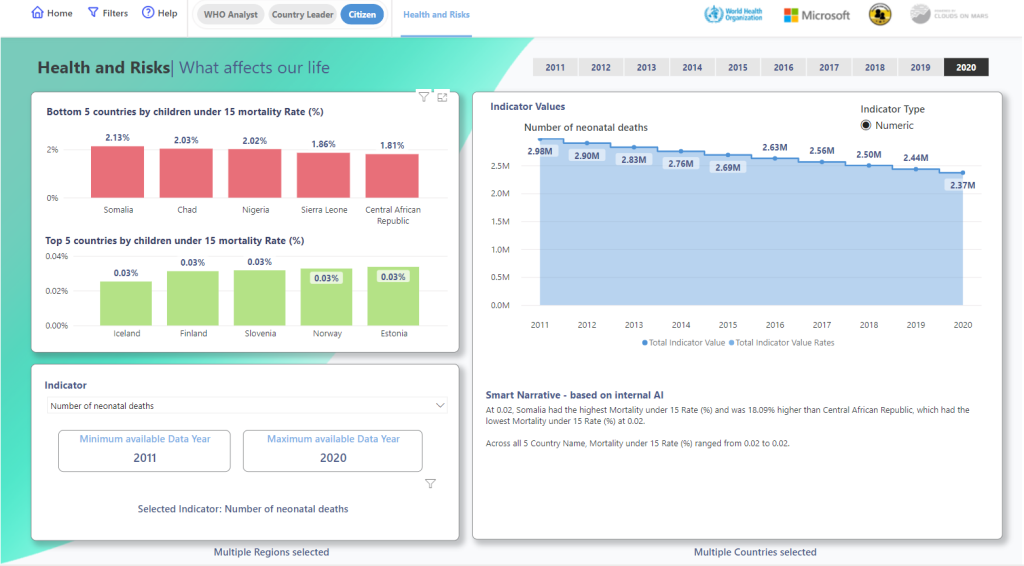
by Jakub Koterba
Nowadays it’s even more important for businesses to have a clear view of all their data to stay competitive and opportunity aware which is where business intelligence comes in.
What is business intelligence (BI)?
In general, Business Intelligence is the process of transforming data into actionable insights to help organizations make more data-driven decisions. It allows us to capture, store, analyze and present data. During the years this process was evolving. Historically it was implemented as a combination of multiple tools with limited flexibility. Modern BI goes towards comprehensive platforms which prioritize speed to insights, empower business users and offer self service capabilities.
Business intelligence tools
Business intelligence is such a broad term that under its umbrella fall a variety of different types of tools. Below listed the most common and important categories starting from the beginning of data flow:
- Data collection: Extracting data from different types of sources.
- Data transformation: Transforming data source data, with above step stands for ETL process (Extract, Transform, Load).
- Data modeling: Create data model with associated relation and constraints.
- Online analytical processing: Allow to analyze data from different angels and different aggregation levels (OLAP).
- Data mining: analyze large amounts of data looking for patterns, using artificial intelligence, machine learning and statistics.
- Reporting: providing data analysis to stakeholders with possibility to filter and select scope
- Data Visualization: provide translated data analysis into easy to read visual representation
Business intelligence software and platforms
Currently on the market available are tons of vendors offering business intelligence solutions. Nevertheless, not all of them offer comprehensive platforms and software which can cover all of the required tools. Additionally such platforms should be very flexible, providing multiple tools which can extend and enrich our solution in future but also easily scale it up as the organization grows. Let’s focus then only on market leaders.

According to Gartner 2022 Analytics and Business Intelligence Platforms Magic Quadrant, we can select top 3 providers:
Microsoft
Unquestionable leader with praised Microsoft Power BI software which offer data preparation, visual-based discovery, interactive dashboards and augmented analytics. With alignment to whole Microsoft environment including Office365, Teams and Azure cloud, is able to extract maximum value from available data. On top of Microsoft ecosystem integration, it also provides a growing library of 500+ free connectors to get a complete picture for data-driven decision making. Whole platform include end-to-end data protection. Most important, with such broad portfolio, it still allow easy use and quick path from data to visual, interactive dashboard experience.
Salesforce (Tableau)
Tableau acquisition in 2019 enables Salesforce to build an ecosystem that harnesses all the benefits of MuleSoft, Tableau and Tableau CRM. It explores, visualizes and securely shares data in the form of workbooks and dashboards. Tool provides an intuitive experience for business users to visually explore data. With patented VizQL engine accelerate no code drag and drop interface. Additionally it offers integrated AI/ML capabilities, governance and data management, visual storytelling and collaboration.
Qlik
Create and share powerful, interactive dashboards in a governable environment. With its leading product, Qlik Sense, leverages its Associative Engine along with its Cognitive Engine to deliver self service analytics and context aware insights. It offers high performance and scalability on cloud of choice or on-premises, which give flexibility of deployment. Company through in-house development and strategic acquisition, is constantly expanding tool capabilities.
BI analytics and reporting
Business analytics is a subset of the whole business intelligence spectrum. Refers to the process of taking raw data available in multiple data sources and turning it into useful information. Business analytics tools are employed for many functions like trends identification, outcome prediction, correlation analysis, regression analysis, text mining and others. Some common methodologies:
- Data mining: sorting through large amount of data to identify trends
- Aggregations: collecting and organizing data prior to analysis
- Forecasting: analyzing historical data to estimate future outcomes
- Predictive modeling: extracting information from data sets to identify patterns and predict future trends
- Data visualization: creating visual representations of data analysis
Reporting is the necessary perquisite of analysis. To make analytics results understandable required is to share data used for analysis with end users as well. With both, user can explain analysis results, but also with data reporting we can empower people for their own analysis.
Examples of business intelligence
Sales Intelligence
Knowledge about your customer is key in any business. By using various reports and dashboards, BI makes understanding customer journeys easy. With information about sales representatives and products profitability it put strong tool in hands of managers who can make vital decision for their business

Production planning and stock management
For global organizations with multiple sites across the world and product diversity, it is required to have a business intelligence system in place which should maximize operational efficiency. It allows us to predict market size with product demand and adjust accordingly to their manufacturing. Having in mind complicates supply chain this require as well sophisticated raw materials stock management, but as well finished goods inventory
Financial reporting
Currently company financial health depends on accurate, up to date data. Business Intelligence can help organizations remain competitive and financially stable by providing fast access to detailed cash flow insights, expense management optimization opportunities. This allows them to make informed decisions about costs and profitability and tie all of this back to business performance. We can distinguish a couple detailed finance analysis categories where business intelligence solutions improve processes: operations reporting, risk management, expense reporting, revenue management, planning and analysis.

Healthcare business intelligence
Today healthcare facilities produce, store and process more data than even before. Coronavirus put a spotlight on this industry setting additional requirements and expectations in terms of processing data into meaningful information as soon as possible. Common pre-pandemic data like patient records, financial metrics, industry health statistics, patient satisfaction scores, clinical trial data from pharmaceutical organizations and insurance information are now often combined with vaccination and travel data to be analyzed on a daily basis. Business intelligence systems help to collect and analyze all of these data. Moreover assure data governance to protect the privacy of patients health records for regulation compliance. Currently such systems also are addressing obligatory actions like public and government integration and reporting.
Organizations which implemented business intelligence can improve multiple process, including:
- Coordinating and scheduling staff based on patient volumes
- Treatment planning based on symptoms
- Patient care, correlate various types of medical data
- Uncover drug interaction side effects
- Automate routine care, schedule follow-ups
- Facility supply chain management
- Financial planning

Benefits of business intelligence
Implementation of business intelligence solution provide multiple advantages to organization, below listed some of them:
- One source of truth: offer unified platform with high quality data from different data sources
- Data-driven decisions: business decision can be made based on information and analysis instead of only intuition
- Boost operational efficiency and revenue: holistic visibility into organization performance and metrics
- Cost reduction: Identify area, product for cost saving
- Identify market trends: identification of new opportunities and strategy building with supportive data
- Competitive analysis: evaluate performance in terms of customer and competitor experience
- Facilitate collaboration: Different departments working on the same platform can share insights and collaborate to encourage growth within the business.
.
Future of business intelligence
Cloud BI
Cloud platforms with a wide variety of tools will be the first choice for business. This is because they offer an extensive tools portfolio and scalability depending on current business needs. Such strategies reduce the risk and establish a consistent environment. With the current wide adoption of remote work, cloud based business intelligence can be accessed anywhere and anytime which makes it the current biggest trend.
Augmented analytics
This will be the next step of currently available tools for data analysis. With support of machine learning and natural language processing, analysis provided so far by data scientist, will be incorporated into platforms available for standard business user empowering them in processes of data discovery, data preparation and overall understanding of correlations in data
NLP Querying
Natural language processing definitely will be used in business intelligence tools. It will allow a conversational approach, by asking questions in plain English and a system, supported by artificial intelligence, will provide accurate answers with data. This will provide quick insights without deep technical knowledge and data expertise.
Final thoughts
Business intelligence is the answer for today’s data-driven world, where companies are facing information overload and are interested in working smarter. Such investment helps companies monitor trends, adapt to varying market conditions and improves decision making at all levels of the organization.
Read more:
